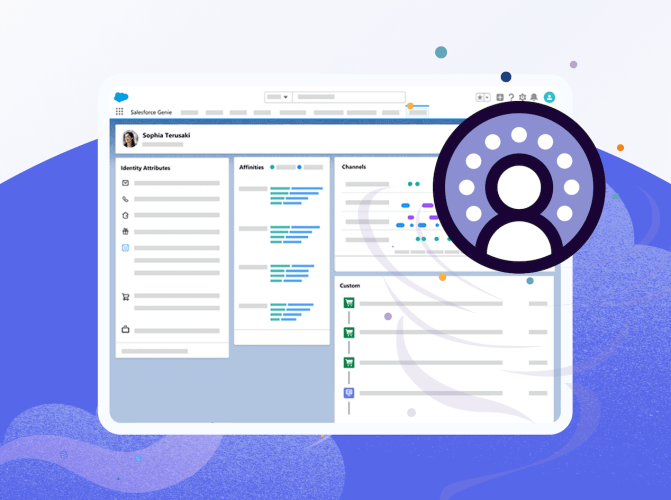Do People Really Trust Your Company? There’s a Metric for That



For many companies, trust is a subjective, elusive concept. It needs to become objective for the organization to really tackle it, and have a C-level exec dedicated to it.

Lisa Lee
You probably know how to build trust with your stakeholders, but do you know how to measure and quantify it? You’re not alone if the answer is no.
Most business leaders would agree that trust in all its forms — physical, digital, emotional, financial, and ethical — is critical, and would give themselves high marks across those dimensions. But the truth is most organizations don’t measure, quantify, or even define trust. And, despite proclamations of its strategic importance, most do not have a C-level individual dedicated to driving it.
Trust has become such a strategic imperative that dedicated disciplines are emerging to help business leaders define, measure, and quantify it. One company doing just that is Deloitte, which in 2021 launched its proprietary Trust Measurement Platform which identifies 17 measurable trust domains for its clients.
Some are predictable — ethics, cyber security, financial integrity, conduct — but many others are a sign of the times, like culture and purpose; workforce experience; commitment to diversity, equity, and inclusion (DEI); and environmental, social, and governance (ESG) issues.
“Ninety-six percent of CXOs we surveyed said trust was critical, but many have not defined what trust means, and even fewer have actually measured it,” said Michael Bondar, Principal and Future of Trust Leader at Deloitte. “How can you expect to measure something you can’t even define?”
Every organization has stakeholders with whom it needs to build trust across these dimensions. Customers and employees are a constant stakeholder, while others may vary depending on industry, like regulators, the media, community, or alliance partners. Each has their own value system and their own expectations, which could conflict with another stakeholder group.
“Navigating this labyrinth, this really complicated matrix, is not intuitive. It’s not simple,” Bondar said. Here is a framework that can be applied to most organizations:
Salesforce CEO Marc Benioff on the importance and value of trust
Why does Benioff believe that trust is the glue that holds successful relationships between companies and their stakeholders together? n



Quantify trust
At the end of the day, business leaders need hard numbers to quantify the importance of trust to the organization and its impact on business performance. That’s where most, regardless of sector or industry, fall short.
Deloitte suggests a structured, constant approach to quantifying trust, beginning with defining specifically what trust means within the context of their industry. The ultimate goal should be to draw a direct line between trust and business performance. For every driver in the trust framework, can you articulate a definitive improvement in performance, so it eventually becomes another key performance indicator?
Also, how do perceptions of trust differ across internal stakeholders? This exercise helps leaders understand expectations across departments, business units, and geographies.
Measure trust
The axiom “You can’t manage what you can’t measure” holds true here. Organizations need to continually poll stakeholders to calculate trust levels. These must be executed in a short period of time (up to six weeks) to provide in-the-moment snapshots. “If you start measuring trust but report on it six months later, whatever you’re reporting on is no longer valid,” Bondar said.
The other crucial measurement ingredient is gathering outside perspectives not only through polling but keeping your ear to the ground on social media and traditional media.
“This is not the competency of most organizations,” Bondar said. “They may measure this in a very shallow way, not do historical comparisons or look at trust by theme.”
Deloitte itself is applying the trust measurement platform, built using Tableau, across its own organization to uncover opportunities to build trust.
“Earning and protecting trust is a critical priority for our clients and for Deloitte itself,” said Jason Girzadas, Deloitte Managing Principal, Businesses, Global, and Strategic Services.
Once the measurement of trust is taken, it should be analyzed with the results providing a quantitative assessment, so organizations can identify gaps, strengths, and opportunities for improvement.
Sometimes outside stakeholders have yet to see cracks in the armor that are visible to internal stakeholders. One example from Bondar: a consumer products company that initially resisted executing a trust assessment, insisting that its products were in high demand and employees were happy.
“By digging into its customer perception, we found issues with product availability, and counterfeit products and websites, which customers blamed on the brand,” said Bondar. “Customer voices online thought the shortages were artificially drummed up by the brand to inflate demand. All of this was lurking around the corner, and had the potential to erode trust.”
Appoint a chief trust officer
So, if trust is such a strategic imperative that impacts business results, shouldn’t there be a C-level person (a chief trust officer, or CTrO) tasked specifically with overseeing trust and aligning all constituencies, holding them accountable?
The numbers are small, but the role is growing. LinkedIn saw a 29% year-over-year (2020-2021) increase in its U.S.-based members getting hired for this role, according to insights analyst Natalie Killian. The company said the role exists mostly in large, mature organizations of more than 10,000 employees, and mostly in the software and IT services industries.
LinkedIn hypothesized that the much higher, and growing, volume of roles in the aggregate bucket of Chief Public Relations Officer or Chief Technology Risk Officer suggests that many companies thinking about building trust as a differentiator are still centered heavily around data privacy and preventing content misuse.
“There aren’t that many companies that are further down the evolution curve, and thinking next level, around transparency, credibility, and reputation,” said Salony Kapur, director of insights, LinkedIn Talent Solutions.
That’s a grave mistake, according to Bondar.
“I believe unequivocally that having someone responsible for trust is essential to the organization,” he said. “Organizations have recognized that trust extends to areas like compliance, ethics, conduct, DEI, and ESG, so the role of chief trust officer needs to exist. Every other key asset in the organization has someone looking over those assets, and this deserves that level of attention, focus, and support as well.”
He believes that unless somebody is directly responsible for trust, nobody will be.
“Unless somebody is actively pushing this idea, setting expectations, driving activity, providing asks, the focus is going to eventually evaporate,” he said. “The drive and ownership are needed. Other C-suite execs need to do their part, but there needs to be a leader responsible for trust.”
But how should it be organized, aligned, and integrated with other senior executive roles? It depends on the culture and dynamics of the organization. Because the concept is so new, it’s more art than science at this point — but the CTrO should not replace any existing C-level roles because they all have an important role to play.
A critical responsibility of the CTrO is drawing connections between and building bridges to the rest of the C-suite. “The principles, commitments, continuous elevation of goals, targets, and vision becomes a jointly-owned or distributed set of activities that should become the purview under the chief trust officer,” Bondar said.
While the concept of trust has rocketed to the top of the strategic agenda in the pandemic era — rebuilding trust is the theme of this year’s World Economic Forum — mistrust still reigns.
Writing for the International Leadership Association in October, Ki Thoughtbridge Principal Katherine Tyler Scott said we are “in a state of chronic crisis with a level of distrust that has become so corrosive it demands the attention of every leader.”
As bleak as that sounds, leaders seem to understand the value of trust as a brand differentiator and brand asset. The next step is quantifying trust in a way that business leaders can commit to supporting with resources and executive talent.
Build trust, or fail
Companies need to collect customer data to deliver the personalized experiences they demand and expect. How can companies do that in the most ethical, trustworthy way? n


























